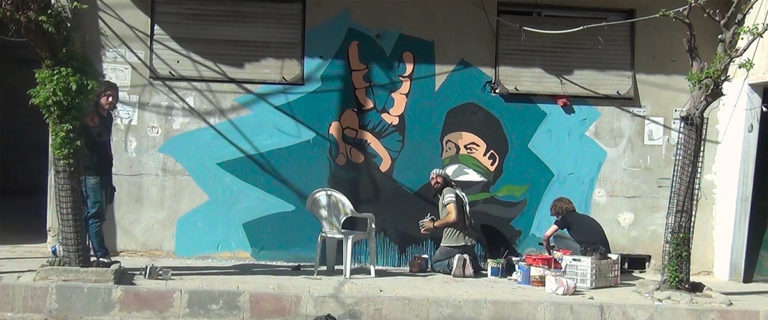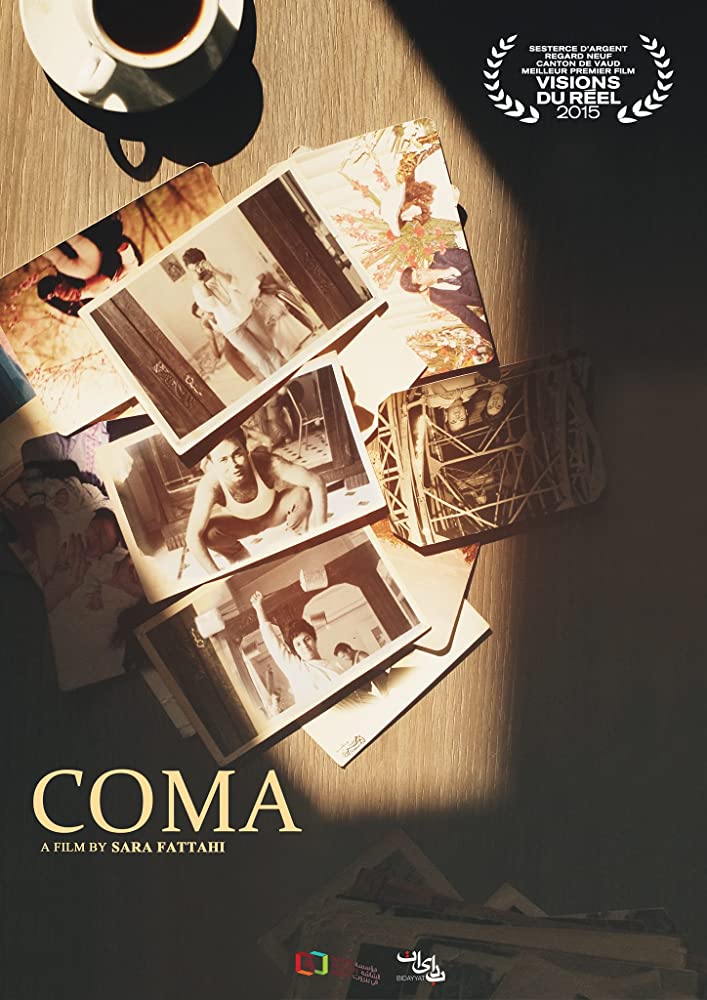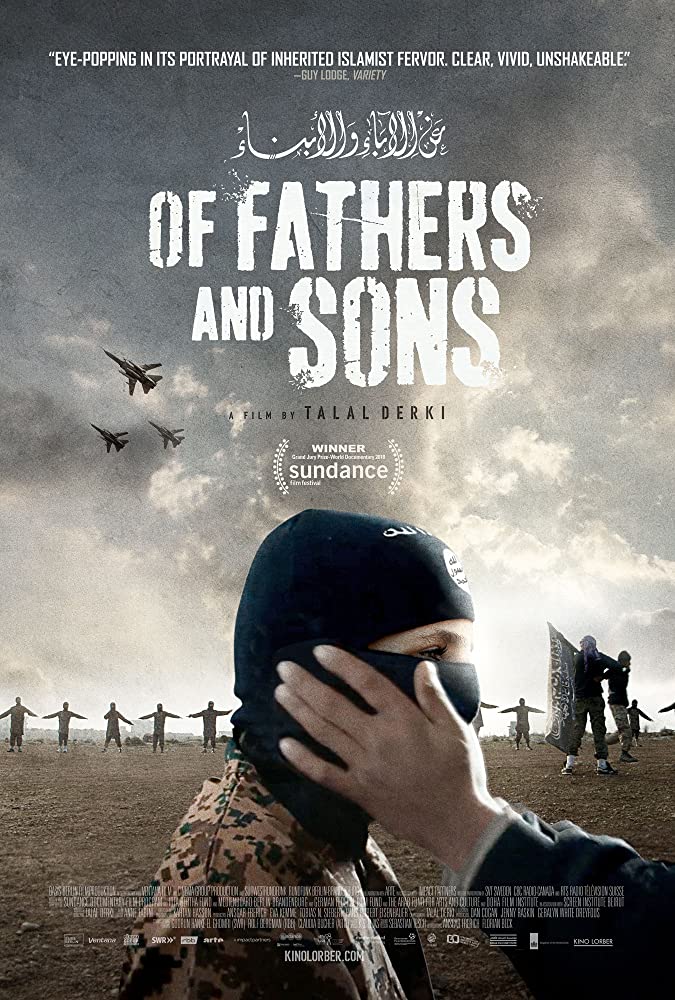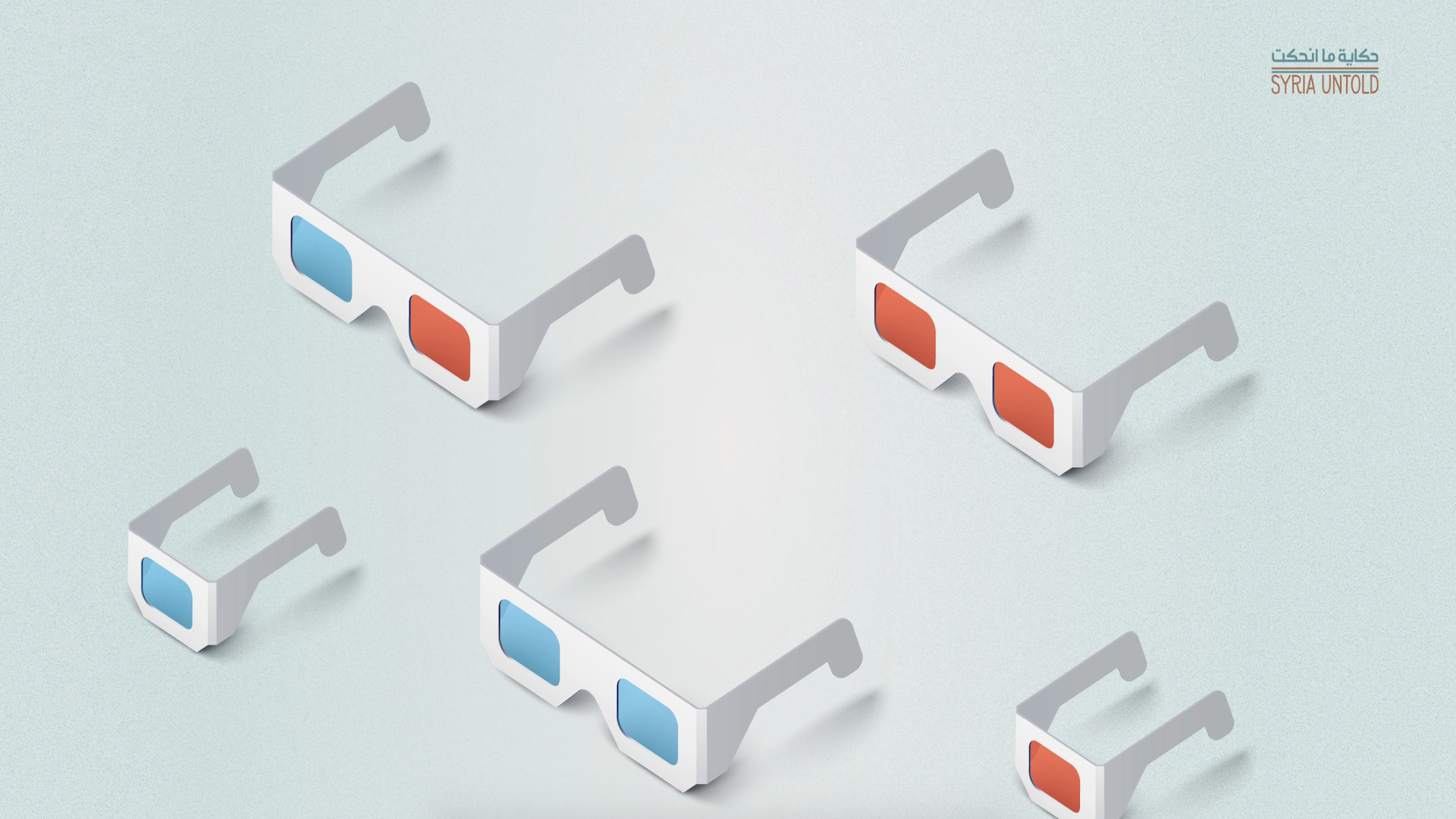For SyriaUntold’s cinema reporting series, we explored Syrian filmmaking through the eyes of Syrian directors, journalists and academics.
Here, Enrico De Angelis turns to Italian cinema expert Giona A. Nazzaro, the General Delegate of the Venice International Film Critics' Week and Programmer at Visions du Réel International Festival of Nyon.
In a wide-ranging conversation on Syrian documentary films of the past nine years, Nazzaro shares his own views on recent Syrian cinema.
A longtime cinema expert, who himself selected and presented several of these films in some of the most prestigious film festivals in the world, Nazzaro offers his opinions on Syrian documentaries’ relevance, and an apparently unsolvable question: is it possible to approach these films at the same time through political and cinematic lenses?
This conversation was translated and edited for flow by Enrico De Angelis, with the contribution of Tom Rollins.
Q: How did you first approach the Syrian cinema produced after 2011?
I want to clarify that speaking about Syrian cinema is a complicated matter for me. A cinema programmer cannot pretend to grasp all the complexities of the context behind it, and then there is the language barrier, of course. In other words, there are limitations that I am very aware of. I am not an expert of Syria's history or the Middle East.
I approached Syrian cinema as someone who has worked on documentary film for a long time. I immediately noticed that the films coming from that region were characterized by an urgency that other films do not have. They express a formal urgency, documenting on the street or recording the collapse of a building hit by a mortar shell, for example. It is a production that, in my opinion, reinvented even the North American concept of "direct cinema.”

Q: Do you see any common features or style that these films tend to share?
Not all of them, of course. On the one hand, you have films like Still Recording, which is a collective film, made by multiple persons—some of whom actually died while shooting.
But on the other hand, you have films with a more western and individual-style narration—and it’s not by coincidence that it’s these films, revolving around a single character, which are having more economic success globally.
The exemplary case here is For Sama. It is a film that I respect, but it focuses on a pregnant woman, a veiled one, who lives in a condition of quasi-subservience (even if I don't believe she is as subservient as she appears in the film). The subaltern relationship is reproduced at the production level, because Channel 4 steps in and makes a different cut, another type of shot, and so on.
Of course, the filmmakers who opt for this second way realize very well what it implies, but they accept a compromise as they think it is the only way to make their voices heard. So I absolutely don't stigmatize the choice of a Syrian director to be ‘helped’ by the know-how of a European director, in order to have access to funds and be included in a distribution circuit.
Emerging from the underground: On ‘For Sama’ and mainstream filmmaking
14 May 2020
These considerations can appear quite brutal. However, I find that it is still quite problematic to impose a foreign gaze to the complexity of the situation in Syria in order to make the context more accessible, to make its narration simpler. It is like trying to find an invisible storyline within the raw plot of the facts and the arbitrariness of the violence.
Even if it is motivated by good intentions, it is a mechanism that tends to reproduce a relationship of domination and colonialism, a subaltern relationship.
Q: Where do you think the relevance of this cinema production lies?
I think that the films that made me understand better the context are those like Still Recording or Coma. I also liked Silvered Water, but in that case I have some reservations.
I realized there was something authentic about the film when it was presented at Cannes. The co-director [Wiam Simav Bedirxan] was invited. She decided to leave after one day or two, because she couldn't bear to be in that situation. In that moment, I understood that there was something, in that film, that was irreducible to the image itself.
The most relevant films are those that are irreducible to the image. For example, I like Still Recording because it’s a political film—but not an ideological, not a partisan one. We know which political side the authors belong to, but no one goes as far as to say what the audience should think. There is this quite crazy trust in the evidence of the image. This trust in the image as evidence enables the directors to make a film that is almost opaque in its evidence.
This interests me. As does the visionary nature of Sara Fattahi's first film Coma, which we presented at "Visions du Réel." It is a film that I discovered scrubbing through films that the selection committee had previously ignored.
We have dramatized the state of being locked down at home for two months so much. Sara anticipated another type of lockdown, much more dramatic, because even if you stay at home you risk your life.
Sara made that film in order to keep herself from going mad, in a situation in which we would have not resisted for a couple of hours. When she was back to Beirut, she thought to quit working on the footage, in order to avoid living that experience again.

I think that this cinema has touched a deep necessity in renewing the relationship with the image.
Another film I saw, which unfortunately in the end was not realized, is made of images of Damascus, and some people (intellectuals, artists, musicians) tell about their relationship with the revolution. At a certain point (and I cannot forget those images), Daesh fighters enter the city. A voice-over interviews one of the characters and asks why they are welcoming those fighters. And one character, in a pure expression of political realism, answers that those fighters were the better armed ones. I was deeply shaken by that statement, because I never lived in that situation. A context in which I need to welcome an enemy because the other enemy [the Syrian regime] is even more merciless and cruel. Well, that political paradox finds its total, self-evident form in a single shot, in a single piece of dialogue.
I think that these things were a gift to us from Syrian cinema, from the depths of its desperation. This confirms that cinema can only find a real necessity when it is rooted in the history of a country, just as it happened in Italy with neo-realism, or with US films during WWII such as Mission to Moscow by Michael Curtiz, or films made just after the war such as The Best Years of Our Lives by William Wyler.
Q: What are the reasons behind the critical success of Syrian documentary films, in your view?
Certain Syrian films exist thanks to European funding. I do not want to criticize this, since it’s because of this funding that important movies in the Middle East have been able to overcome political or productive barriers.
But we have to be careful, since we cannot think to impose the form and the gaze that characterize our comfortable situation of Europeans on this cinema.
For Sama is an almost unsustainable film because of the violence it shows and the tragedy of the situation, but as I mentioned earlier, this did not prevent me from noticing some narrative tricks.
In the end, the only possible criticism towards films that are produced in such a catastrophic context is to assess whether they possess a formal consistency.
It is not our role to say whether behind the production of a film there are other ambitions, such as escaping from Syria, or selling it to a distributor, or obtaining asylum in a European country. Because, even if that was the case, who would dare to blame them for trying to improve their conditions?
So I don't take on a relativistic approach when it comes to this cinema.
I think that all these directors contributed to create a real-time counter-narrative of what is happening in Syria. A narrative that is exactly the opposite of the dominant western narrative. How many times have we heard the phrase: "You can't understand what is happening in Syria”? These films tell us the opposite: you can understand everything.
These films' point of view also completely rejects the representation of the hegemonic narratives of Russia, Turkey, Iran, or Saudi Arabia. Not because they are oblivious to those interests, but because, from a strictly cinematographic point of view, they underline that the story of a single, young director is more important than knowing, for example, which territory is controlled by whom and which kind of passport you need to transit there. We already know all these things. What we lack is the record of the lives of those who were, literally, erased, not only by the violence, but also by our request to have a simplified narration at any cost.
So, this cinema is an answer to those who state that "But in the end it was better under the dictator".
These films enabled me to activate a different way of listening. It is a cinema that tried to offer the complexity of those contexts through the images.
In Bari, in February, within the festival "Registi fuori dagli schermi" (Directors out of the screens), Still Recording was screened. There was a football match at the same time, and we were afraid only a few people would show up. The movie theater was full. The director, Saeed al-Batal, was amazed. This means there is a widespread desire to understand. It’s false that people either do not want to, or cannot, understand [the situation in Syria].
Q: Many of these films have provoked quite intense debates among Syrian and Arab audiences as well, like Talal Derki’s Of Fathers and Sons, for example…
I saw Of Fathers and Sons by Talal Derki for the first time at Vision du Réel. Later on, I was on the jury at the Carthage Film Festival, and the film was screened there too. I watched it with a Palestinian director, Raed Andoni, who was also in the jury with me. I perceived immediately that in the cinema in Tunis there was a different tension than in Nyon.
At the end of the film, a visibly altered woman shouted angrily something at the screen. I noticed Raed's expression hardening. Others from the audience started applauding, and at that point Raed rushed out of the cinema and I followed him. Apparently, the woman was saying "Damned to you who raised against Bashar al-Assad. You brought Daesh into our homeland!".
After the screening ended, in the hall, a Syrian girl approached Raed and she was crying and she said "We made our revolution, and many people died for it, and then a film such as this one depicts reality as if between al-Assad and Daesh there was nothing". She looked distraught.
What I am trying to say is that it is complicated. Because I don't think the woman shouting at the screen was a “fascist,” and I cannot stigmatize her desire for normality. I don't have to live with the specter of religious, misogynist, and violent movements such as Daesh. I would be very arrogant if I judged her.
And at the same time, how to explain to that girl that Talal's film does not aim at obliterating her revolution, and it is just a film that deals with the description of a tiny fragment of reality?
These films, but in general all the films coming in the context of the so-called Arab Spring, a term I don't like, enabled me to activate a different way of listening. It is a cinema that tried to offer the complexity of those contexts through the images.

Q: And the debate on Syrian documentary films often feels quite fraught, in that it’s very difficult to discuss these films without engaging with the political background that they are immersed in.
Brecht said, "What kind of times are these, when to talk about trees is almost a crime, because it implies silence about so many horrors?” In this sense, the discussion is impossible.
And I understand Talal Derki's film can be problematic. However, we should also acknowledge that the filmed person [Abu Osama] was well aware of the camera. He put himself on the stage. No one can be considered so naïve to think that a documentary represents reality. When the armed religious extremist accepted to be filmed, he staged himself into it. He decided to dwell in the film in order to use it as propaganda, perhaps considering the director as an idiot who could not understand it.
From this point of view, the film is extremely interesting. You have two people. The first is the director who lies, and of course he has to lie, because he is dealing with an al-Qaeda fighter and cannot reveal what his real intentions are. The second is someone (Abu Osama) who thinks the director does not know how to use the camera, and cannot distinguish between reality and its staging.
So the film is interesting because Talal Derki films the self-fiction of a Nusra militant, exactly as the militant himself would want to present his reality. So it is a sort of mise en abyme of the Islamist militant figure.
In that sense, I don't share the criticism of those who accuse the director of filming the Islamists against their will or by cheating, which is something incredibly naïve to say. Because Abu Osama tried to be filmed exactly how he wanted to be filmed. When he is filmed in the bed, without his leg, he is showing his own martyrdom. He is doing his holy propaganda film hoping that people like him would watch it.
It is very naïve to think that cinematic manipulation works in one direction only, from the camera towards the poor filmed victim. The poor victim, in this case, was enacting his own martyrdom in front of the camera with a propagandistic aim. All of this makes the film very interesting. But we are now discussing in terms of theory of the image.
If we shift to the political dimension, of course it is different.
The diasporic alienation of Syrian cinema
11 February 2020
The film poses a political problem anyway. Who are those two? Who are those people who, on the background of a destroyed country, fight in such a fierce and yet subtle way, within the perimeter of an image or a shot? Of course, it becomes problematic.
Another example is All This Victory, which we presented in Venice in 2019. The film narrates the 2006 Israeli attack on Lebanon. I think it is an interesting document produced by people who lived directly in that situation, and reminded me of the cinema of Samuel Fuller, filming in closed spaces, while you do not see who is fighting. It is also a film that talks about a permanent war, and while we were screening the film in Venice Israel was dropping bombs on the Lebanese border again.
Some Syrian directors wrote to me and asked me why I decided to present that movie, which they accused to be complicit to the Syrian regime. The film was filmed in Zabadani, in Syria, which is also occupied by Hezbollah.
But the production never hid the filming locations, which are listed at the end of the movie. For me, the fact the production included the contradictions of what is currently going on just outside their doorsteps in a film about the 2006 war was an extremely important and political decision. It shows that the process of making a film cannot be cut off arbitrarily from the context of history in which it is immersed. Thus the film allows me to observe the war of 2006 with a different set of lenses. It provides me with a dual vision: Now and then, here and there, ici et ailleurs, as Godard would put it. Film poses problems. It does not offer solutions. As cinema should do. I can relate to the issues it raised and I do not share the criticism levelled against it. I do think that this film about 2006 is such an extraordinary accomplishment that it would be unfair to deny it. Let’s discuss, but let’s not throw accusations at each other. We are all on the same side: freedom, political rights, and cinema. But I am well aware that my point of view could be accused of being the relativistic luxury of a Western festival programmer.
In this sense, I stay true to the film and to my decision to screen it in Venice, where it won five awards. I am not saying that there is someone who is right and someone who is wrong of course, but this is how I see it.
What we shouldn’t forget is the reverse shot, the image that we cannot see. The available image is only a working tool. It is what is left outside of that image that should outrage us. What we could not see.
What I mean is that, while the political dimension can elicit more urgent or simpler considerations, all those images coming from Syria are much less linear than some polarized and heated debates seem to suggest.
Can we hope that when we approach these films, we grant them the same complexity as we concede to ourselves? Many Arab directors simply want to tell a story, and instead the burden of representing everything and everyone is imposed on them, as well as the blame, if they are not capable of doing that.
Q: You mentioned before that some of these films present a sort of "opacity of evidence" and they are "irreducible to the image.” What do you mean exactly by that?
Today Syria is an image, which is of course reductive, but it also constitutes an improvement, because most of the people until yesterday could not even locate the country on a world map.
This image tells us about an unspeakable violence, a violence that hasn’t been matched by any other context in recent history.
Especially, this image serves to remind us of all that we did not see. Because it would be a tremendous error to think that since we do have an image, then we really saw something.
These images are so important because they tell us about all the other images we could not see.
Marguerite Duras said, "You saw nothing in Hiroshima" (T’as vu rien à Hiroshima). And we saw nothing in Aleppo, Damascus, or Douma.
It is the images we forgot that constitute the opacity I refer to. The evidence is in the absence of images that we cannot see. The images of the Syrian films remind us of all the millions of absent images.
Of course we cannot see everything, as we cannot read everything.
But these films have understood instinctively, viscerally, and out of necessity something crucial of modern cinema. All modern cinema deals with the impossibility of the image of showing reality. Syrian cinema tells us that the image is above all a reminder of everything we could not see and we risk forgetting.
It is similar to the fact that an image of Auschwitz is first of all a hypertext to remind us what we are trying not to obliterate.
What we shouldn’t forget is the reverse shot, the image that we cannot see. The available image is only a working tool. It is what is left outside of that image that should outrage us. What we could not see.
This is why these Syrian films are so important. They push us to reflect on the necessity of looking out of the frame.
This is also why these films are at the same time evident and opaque.






